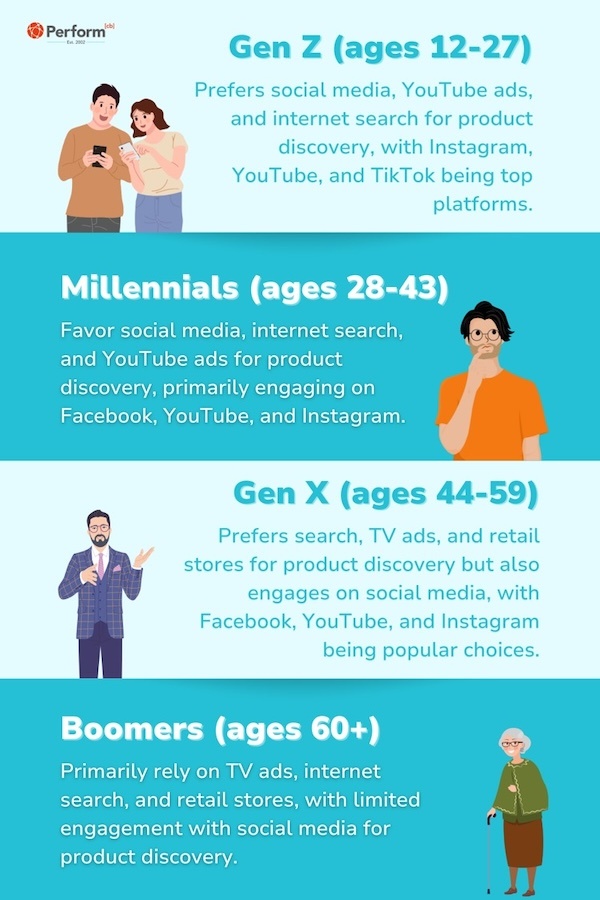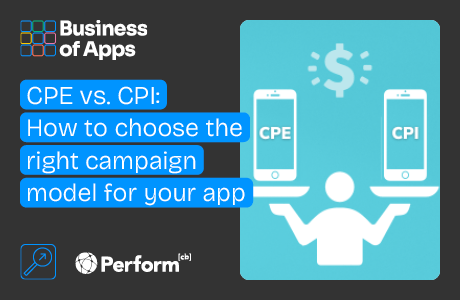Technological advancements such as AI-powered recommendations, voice search, and the rise of social commerce have fundamentally transformed consumer purchasing behavior. That’s where the power of Omnichannel comes in – marketers who fail to recognize the impact of this multichannel approach could risk missing out on 30% of potential sales. Customers interact with brands across numerous digital touchpoints before making a purchase, expecting a seamless and integrated user experience throughout.
An omnichannel customer experience allows consumers to engage with a brand across various digital channels through authentic, engaging ads and content. Done well, an omnichannel customer experience can extend reach, help convey a unified brand voice, reduce customer churn, and ensure a personalized ad experience regardless of platform. In fact, marketers who leverage three or more channels can boost order rates by a staggering 494%.
Let’s uncover five key strategies to improve your brand’s omnichannel customer experience.
Consistent brand identity
Consistency is key when it comes to brand identity. Ensure that all channels, whether it’s your website, mobile app, social media platforms, or brick-and-mortar stores, are harmonized to reflect cohesive branding. Customers should encounter a unified brand message and user interface across all touchpoints. By utilizing similar imagery, colors, fonts, and content across your digital platforms, you reinforce your brand’s identity and create a smoother and more cohesive customer journey.
When users encounter familiar branding and messaging at every step of their interaction, they are more likely to develop a sense of trust and loyalty. Research shows brands that maintain consistent omnichannel customer engagement strategies turn an impressive 89% of buyers into loyal customers.
Generational marketing
Capturing user attention is hard, especially when targeting so many different demographics. Understanding the unique preferences and behaviors of Gen Z, Millennials, Gen X, and Baby Boomers is key to crafting and testing effective strategies across the channels that resonate best.
By recognizing these generational differences and tailoring ad creative approaches accordingly, brands can better engage with their target audience. This involves leveraging data to implement targeted strategies – for example, influencer campaigns for younger audiences and nostalgia-based campaigns for older demographics.
Optimize down-funnel events
While many marketers set diverse campaign KPIs, they can oftentimes accidentally overlook the end goal outcomes. By optimizing campaigns to target users who drive desired outcomes, marketers can reach similar audiences, ultimately leading to an increase in ROAS. This emphasizes the importance of combining data-driven insights with creative strategies when allocating ad spend across different channels.
To optimize around down-funnel events or secondary conversions, it’s vital to pinpoint your brand’s real-time tipping points (RTTP). These are pivotal moments or signals when a user engages with your product, allowing you to predict their average value. Such events may involve completing a purchase, subscribing to a service, registering for a new account, or making an initial deposit. Learn more about RTTP in Perform[cb]’s C-Suite’s Guide to Outcome-Based Marketing.
Turn installs into active and engaged customers
Grow in-app revenue and build user loyalty with custom retargeting and churn prediction campaigns from Adikteev.
Get startedSetting up robust tracking across all touch-points and channels is essential for monitoring which of these value signals lead to qualified customers, and optimizing accordingly. Utilize analytics tools, customer relationship management (CRM) systems, mobile measurement partners (MMPs), and attribution models to capture data on customer interactions and behaviors effectively. Perform[cb] is seamlessly integrated with the industry’s leading MMPs, including Adjust, AppsFlyer, Branch, Kochava, and Singular.
At Perform[cb], we operate on the principle of comprehensive optimization. By ingesting client data and analyzing primary and secondary signals, we gain full-funnel insights into the user journey. This enables us to align creative strategies with channels that offer the most impact and value at each stage. Delve deeper into how you can replicate this approach in our Mobile Manual: Your Complete Guide to Mobile App User Acquisition.
Outline your customer journey
While it may seem obvious, many marketers need to routinely take a step back and evaluate how their ideal customers have evolved, adapting to new shopping habits and emerging channels. Marketers who truly understand their target audience are more likely to achieve desired outcomes, such as increased engagement, higher conversion rates, and up to 30% increase in revenue and retention, all while driving long-term loyalty.
Put yourself in your customer’s shoes and fully map the journey they undergo when interacting with your brand. Recognize that not all users follow the same path, making it essential to cater to diverse preferences and behaviors. Create a detailed map of the customer journey and regularly revisit it to track any shifts or developments. This proactive approach enables you to identify the most effective elements of your marketing strategy and refine them for optimal results.
Marketers have at least 24 diverse channels available to reach their ideal customers, just waiting to be tested with outcome-based marketing. Discover how integrating omnichannel and outcome-based marketing can significantly optimize the user journey and improve your chances of reaching your desired acquisition goals.
Collect feedback & personalize
It goes without saying that the only way to understand your customers is to listen to them. However, with increasing privacy restraints, gaining valuable user insights becomes more challenging. Therefore, finding innovative ways to gather first-party user data and feedback is essential.
Listening to customer feedback provides priceless insights into how your service is performing and fosters a sense of value and inclusivity among customers. To solicit feedback effectively, consider creating surveys that dive into specific aspects of your omnichannel experience. Ask questions about what users appreciate, what they find lacking, and how the experience can be enhanced.
For example, brands can utilize customer data and insights to personalize their users’ shopping experience across channels. By leveraging information such as past purchases, browsing behavior, and preferences, marketers can tailor product recommendations, promotions, and messaging to resonate with each customer. This personalized approach not only enhances the overall shopping experience but also strengthens customer loyalty and engagement.
Eager to craft a personalized omnichannel user experience strategy but not sure how to get started? Download Perform[cb]’s Mobile Manual.
Unleash the power of omnichannel engagement
Whether you’re looking to enhance your brand’s identity or seeking innovative ways to collect user insights, remember that every interaction counts. By embracing these strategies, brands can forge deeper connections with their audience, drive conversion, and foster long-term loyalty.
Ready to take action? Reach out to Perform[cb]’s team of outcome-based user acquisition experts.
But why stop there? Dive into Perform[cb]’s Mobile Manual: Your Complete Guide to Mobile App User Acquisition and elevate your mobile marketing strategy to the next level!













